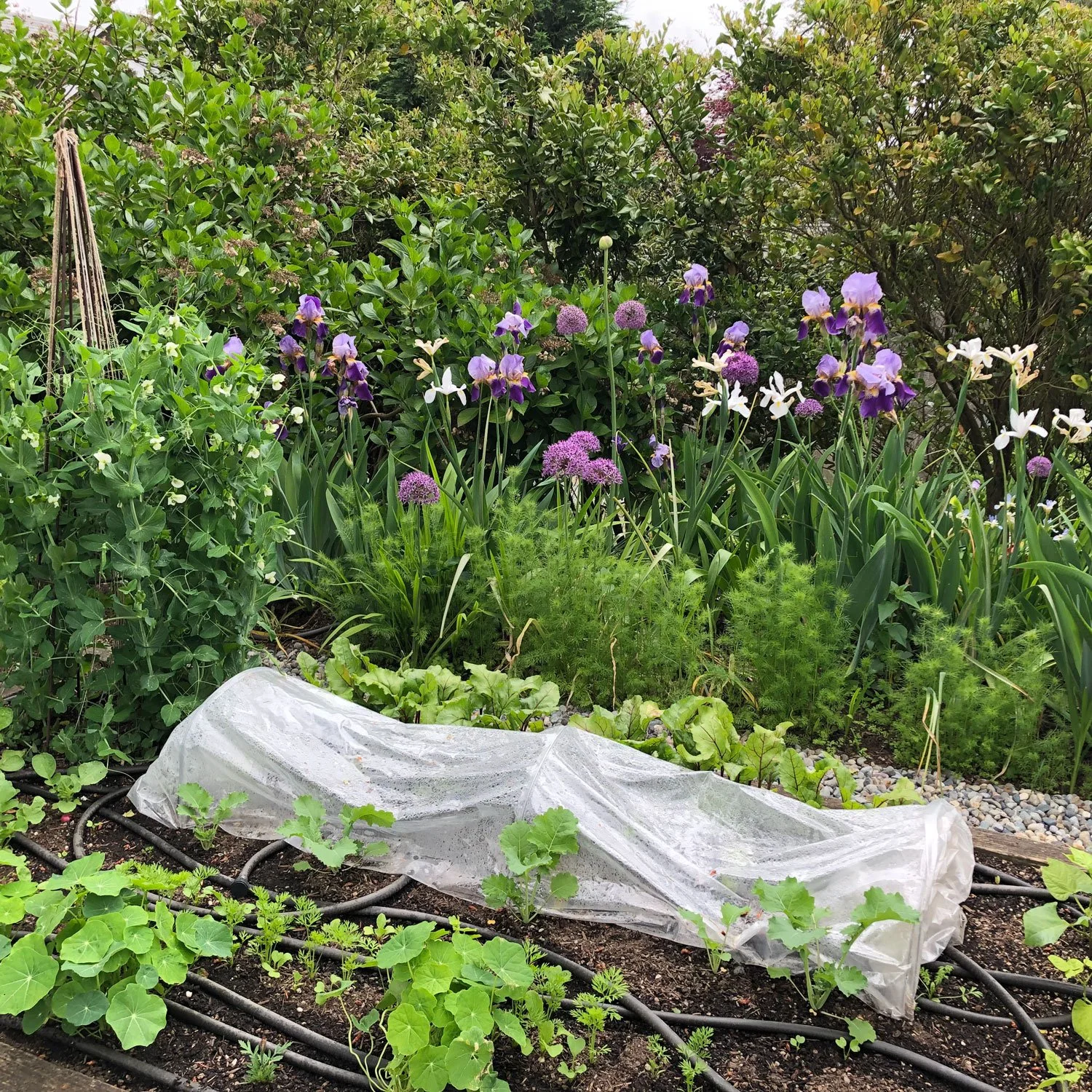MONTHLY GARDENING TIPS
Here’s what to do, what’s in bloom, and lots of tips and tricks for every month of the year. Check back each month to find new, seasonal tips for ornamental gardening, lawn care, edible gardening, and indoor plant care in the Pacific Northwest!
May Gardening Tips for the PNW
In the Garden
Keep the color going all season long by planting vibrant annuals like geraniums, lobelia, bacopa, petunias, calibrachoa, and begonias in beds and containers. Need inspiration? Check out our blog: Our Favorite Flowers for May.
Looking to attract bees, butterflies, and hummingbirds? Explore our Pollinator & Wildlife Garden Resource Page - a hub of guides and blog posts to help you create a thriving habitat.
Dahlia bulbs can be planted in the garden or into containers now. Insert support stakes at planting time to keep from spearing the tubers by staking after growth has started.
Peonies can be transplanted now or in the fall. If you have a new plant, either transplant it right away or leave it in its pot until fall. Learn more about Peony Planting and Care in the PNW.
If needed, prune spring-flowering shrubs, like rhododendrons and lilacs, just after they have bloomed. Learn the best techniques in our blog posts: Pruning Rhododendrons and Pruning Lilacs.
Edible Gardening
New to edible gardening? There’s still plenty of time to plant fruits, herbs, and vegetables. Our guide, Starting a Vegetable Garden, will help you grow with confidence.
We have a fantastic selection of tomatoes ready for your garden! Discover top-performing varieties in our blog: The Best Tomatoes to Grow in the PNW. Once you’ve picked your favorites, follow our step-by-step guide: How to Plant a Tomato.
May is a great time to plant most vegetables outdoors. However, tender crops like tomatoes, squash, and beans may still need protection from chilly nights. Learn how to give them the best start in: How to Protect Your Tomatoes and Other Warm Season Vegetables.
Now is the time to start a regular, deep-watering routine. We recommend using drip irrigation or soaker hoses to deeply saturate the soil without wetting the leaves of vegetables, which can help prevent diseases.
Lawn Care
May and June are ideal months to aerate, topdress, and over-seed your lawn. Just be sure to keep it well-watered during the process! Follow our Step-by-Step Lawn Renovation guide for everything you need to know.
Deal with those dandelions now, before they spread their seeds! Spot spray or pull them, and be sure to remove as much of the taproot as possible. See more in: How to Get Rid of Dandelions.
Want a lush, healthy lawn? Start with the basics in our blog: Spring Lawn Care.
If it's growing, you can mow it! Set your mower to medium height to avoid cutting off more than 30% at a time. Longer grass encourages deeper roots, which means a stronger, more resilient lawn.
Indoor plants
As days grow longer, your houseplants wake up! Spring is the ideal time to fertilize—use a formula made just for indoor plants and follow label instructions for healthy, vibrant growth. Discover more seasonal tips in our blog: Spring: Your Houseplant’s Favorite Time of Year.
Spring and summer are perfect seasons to repot plants that have outgrown their containers or need fresh soil. Not sure where to start? Read our step-by-step guide: How to Repot a Plant.
If you’re moving houseplants outdoors for summer, acclimate them gradually. Start with a shady spot for a few hours, then slowly increase their time and sunlight exposure until they’re ready for full days outside.
Want to add a few new indoor plants to your home? Check out our guide to Choosing Your Next Indoor Plant.




